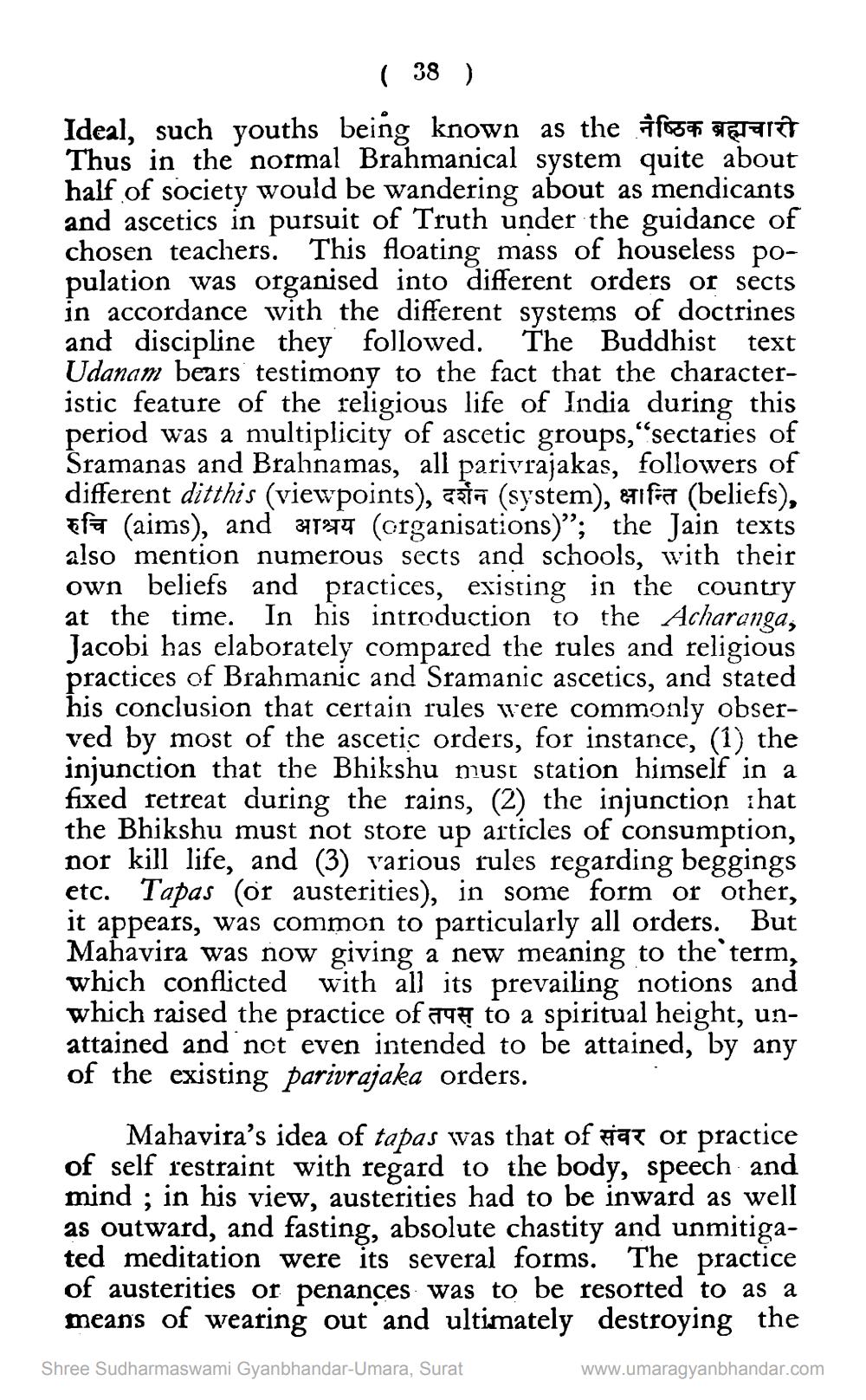________________
( 38 ) Ideal, such youths being known as the foot fara Thus in the normal Brahmanical system quite about half of society would be wandering about as mendicants and ascetics in pursuit of Truth under the guidance of chosen teachers. This floating mass of houseless population was organised into different orders or sects in accordance with the different systems of doctrines and discipline they followed. The Buddhist text Udanam bears testimony to the fact that the characteristic feature of the religious life of India during this period was a multiplicity of ascetic groups,"sectaries of Sramanas and Brahnamas, all parivrajakas, followers of different ditthis (viewpoints), caia (system), ifa (beliefs),
fa (aims), and 31274 (organisations)”; the Jain texts also mention numerous sects and schools, with their own beliefs and practices, existing in the country at the time. In his introduction to the charanga; Jacobi has elaborately compared the rules and religious practices of Brahmanic and Sramanic ascetics, and stated his conclusion that certain rules were commonly observed by most of the ascetic orders, for instance, (1) the injunction that the Bhikshu must station himself in a fixed retreat during the rains, (2) the injunction hat the Bhikshu must not store up articles of consumption, nor kill life, and (3) various rules regarding beggings etc. Tapas (or austerities), in some form or other, it appears, was common to particularly all orders. But Mahavira was now giving a new meaning to the term, which conflicted with all its prevailing notions and which raised the practice of age to a spiritual height, unattained and not even intended to be attained, by any of the existing parivrajaka orders.
Mahavira's idea of tapas was that of fat or practice of self restraint with regard to the body, speech and mind ; in his view, austerities had to be inward as well as outward, and fasting, absolute chastity and unmitigated meditation were its several forms. The practice of austerities or penances was to be resorted to as a means of wearing out and ultimately destroying the
Shree Sudharmaswami Gyanbhandar-Umara, Surat
www.umaragyanbhandar.com




